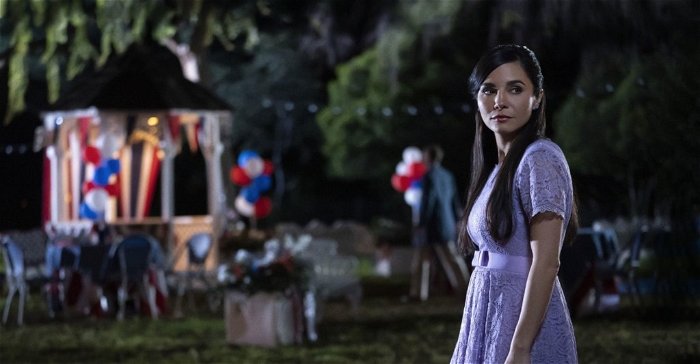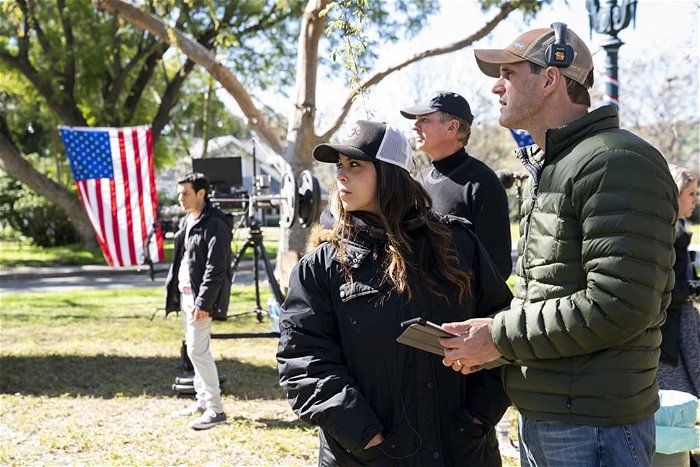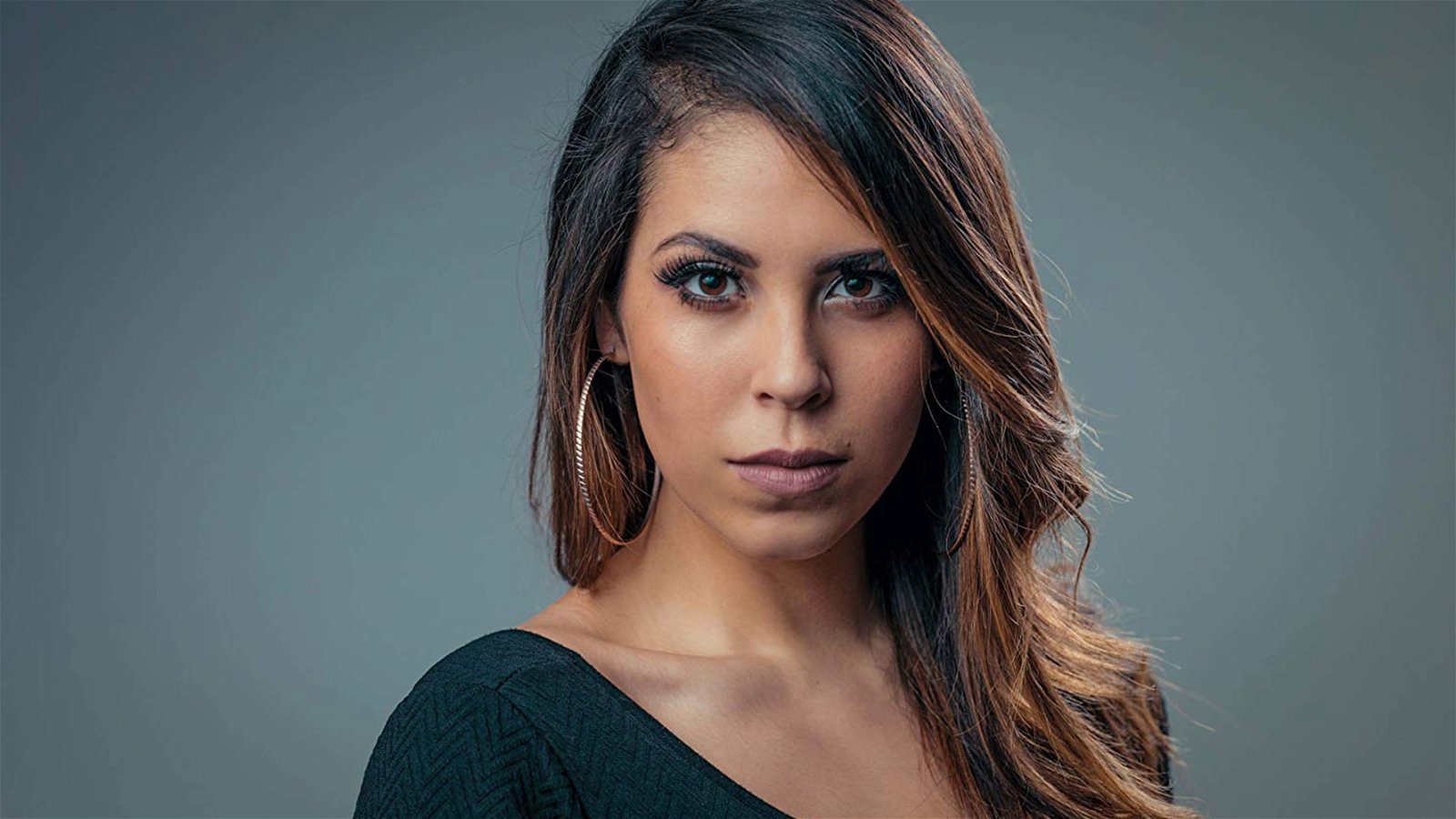Taking time out of her busy schedule, Gigi Saul Guerrero took some time to talk to CGMagazine and discuss society, horror, and the Blumhouse way of filmmaking.
Horror, as a genre, has tremendous power to comment on society. When you look at a horror film, it acts as a testament to the extremes on which a society can be commented, be it violence, cultural dystopia, or even just the horrors of the present day.
This is one reason I have always loved jumping into a genre film and seeing a twisted mirror reflect the world I live in.
When I first heard about Culture Shock, a new horror film that is part of the Blumhouse produced Hulu series, Into the Dark, I was excited to see how it tackled the subject matter. With so much going on in the world with immigration and the fear of the other, it was the perfect time to tackle such a concept.
Director Gigi Saul Guerrero took on this concept with flair and style. The film, that is at times hard to watch, paints a disturbingly plausible take on what the southern US could look like should society follow the path it is on. Taking time out of her busy schedule, Gigi Saul Guerrero took some time to talk to CGMagazine and discuss society, horror, and the Blumhouse way of filmmaking.

CG Magazine: let’s talk about what made you want to be involved with Culture Shock and how the concept came to be?
Gigi Saul Guerrero: It’s really cool how this all came to be. At this time last year, I signed with my agents over in LA—so, not very long ago. Blumhouse productions was actually my very first general meeting that they sent me out to, so I was very excited. I know that the name of the game is you probably have to do many, many meetings until you book something. I just happened to be at the right place, right time, that they were in search of a Hispanic or Mexican director to tell this story. Within the conversation, they’re like, “Oh, we’re making this border crossing horror film,” and I ask if they saw my crossing horror shorts. Long story short, I sent them my short film, which is called El Gigante.
From there, the rest is history—we were a match made in Hell, and I was very much interested. As soon as they sent me the script after they saw my short film, I was so connected to something like this. I felt this had to be my first feature, a movie like Culture Shock. I felt that I could bring new layers to the script, or the authenticity that wasn’t quite there. And the sensibilities, from a Mexican woman’s perspective, as our lead character is a Mexican woman, and an immigrant, and I am also an immigrant from Mexico to Canada. I brought my sensibilities and my understanding of the topic so I was very much excited to tackle a script like this.
CGM: I do want to quickly touch on the timely nature of the subject matter within Culture Shock as a mirror for reality. This film is very tied to the now and what’s going on in the present world, was there ever a worry for you that you might be pushing too far with the film, or perhaps not far enough?
GSG: Well, that’s a great question. No, I definitely first felt there’s not enough. We’ve got to do more. But strangely enough, as we were shooting, this whole unfortunate thing of—I will call them concentration camps—that wasn’t quite on the news while we were filming this. I remember coming to set after seeing the reports for the first time as they slowly trickled out. Now children are being separated from their parents and basically the government was caging people. I was very nervous, because I was like, “Oh my God, we just, I literally wrote that.” I just felt in my stomach that, “Oh, I’m going to get shot,” I was quite nervous. But at the same time, it just felt right. It just felt so good to talk about it and I think that’s why the movie really shines.

The whole crew and especially the cast felt so invested to design something like this. It happened very strangely with how we were shooting things. One of those days it had come out that the President said that he wanted to make communities like these for immigrants. And I was like, “Oh, this is exactly what we’re filming.” Then once we started filming the gritty part, where we have everyone strapped up, covered in gunk, blood, sweat and grossness—that whole part in the lab where they’re basically caged up—all that started to come out on the news. I was like, “Okay, I’m going to get killed, like what is going on?” It was wild, but it pushed me to not hold back.
CGM: I want to ask about horror as genre cinema and horror as a way to point out cultural problems. Do you view horror as a tool? Do you think this film has the power to change or to convince people that a straightforward documentary or a straightforward drama might not have?
GSG: That’s one of the reasons why I personally love genre so much because you can take any relevant thing that we can connect to any issue, you can expand it and manipulate it in the most morbid or exaggerated ways you can think of. Yet we’re still talking about the same thing and it almost gives us this extra mile of this visual pleasure that we don’t quite see, I think in a more realistic visual point of view, and I think it even goes back to exploitation films.
When they talk about “revenge” and the “final girl”, and for us women to see that, it’s just this idea that we can’t quite achieve that extreme of revenge, for example, in a real setting. I think genre can just go the extra mile whether it’s science fiction, straight horror, or thriller, people are put in situations that we can all relate to but there just happens to be a ghost hunting them at this time. I think even movies like Hereditary are so good because at the end of the day, take out all the witchcraft, and it was about a dysfunctional family. We all know what that is like, we either have friends who have that or we do, and I think horror is a way speak even further on ideas and feelings that we have that we can’t really do in in a regular film.

CGM: How do you view working with online streaming service rather than the standard theatre system?
GSG: Yeah, the ways of filmmaking and viewership continue to grow and change. And with the high demand for content now, I’ve lost count how many streaming platforms there are. However, I’m personally really excited about that because the access to watching these movies and shows is guaranteed. As a filmmaker, to me that that’s encouraging because my film is going to be seen, like it’s available so quickly, at everybody’s fingertips. It’s like the light at the end of the tunnel is real. While making this movie for Hulu, I knew from the moment I got the job I there’s a release date and the movie was going to come out regardless—and that’s incredible. I mean, I’m still a fan of old school ways to go get your popcorn or to get in the car and go see a movie, but the opportunities continue to rise for new voices. I think platforms are what’s changing that and giving us those opportunities.
To Read the full interview, pick up CGMagazine #37




